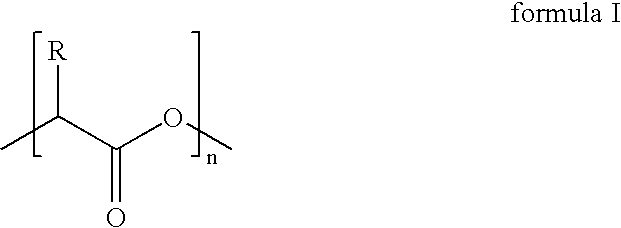Treatment fluids and methods of use in subterranean formations
a technology of subterranean formations and treatment fluids, which is applied in the direction of thin material processing, drilling compositions, chemistry apparatus and processes, etc., can solve the problems of affecting the ability of aqueous-based cleanup fluid to clean the filter cake, affecting the ability of aqueous-based cleanup fluid to remove the filter cake, and often being much more difficult to remov
- Summary
- Abstract
- Description
- Claims
- Application Information
AI Technical Summary
Benefits of technology
Problems solved by technology
Method used
Image
Examples
example 1
[0045] A sample drilling fluid was prepared by adding 80 pounds of calcium carbonate to a barrel of a nonaqueous-based fluid commercially available under the trade name “ACCOLADE,” from Halliburton Energy Services, Inc., of Houston, Tex. The sample drilling fluid was tested using a Model 90B dynamic filtration system that is commercially available from Fann Instruments, Inc., of Houston, Tex. The. sample drilling fluid was circulated through a hollow cylindrical core within the Model 90B, at 100 psi differential pressure and agitated at a setting of 100 sec-1. Filtrate was permitted to leak outwards through the core, thereby building a filter cake on the inside of the core over a time period of 4.5 hours. Next, the sample drilling fluid was displaced from the core and replaced with a conventional breaker solution comprising from 1% to 3% acetic acid by weight. In one test run, the conventional breaker solution comprised 1% acetic acid; in another test run, the conventional breaker s...
example 2
[0047] A white, solid, degradable composite material of the present invention comprising npolylactic acid and sodium acetate trihydrate was placed in a test cell at 250° F. and covered in mineral oil. The material was maintained at 250° F. for about 24 hours, during which time a yellow liquid layer of the degraded composite formed at the base of the cell. This example demonstrates, inter alia, that the degradable materials used in exemplary embodiments of the bridging agents of the present invention may be degraded by heat alone, apart from contact with any external degrading agent.
PUM
| Property | Measurement | Unit |
|---|---|---|
| pH | aaaaa | aaaaa |
| temperatures | aaaaa | aaaaa |
| particle size distribution | aaaaa | aaaaa |
Abstract
Description
Claims
Application Information
 Login to View More
Login to View More - R&D
- Intellectual Property
- Life Sciences
- Materials
- Tech Scout
- Unparalleled Data Quality
- Higher Quality Content
- 60% Fewer Hallucinations
Browse by: Latest US Patents, China's latest patents, Technical Efficacy Thesaurus, Application Domain, Technology Topic, Popular Technical Reports.
© 2025 PatSnap. All rights reserved.Legal|Privacy policy|Modern Slavery Act Transparency Statement|Sitemap|About US| Contact US: help@patsnap.com



